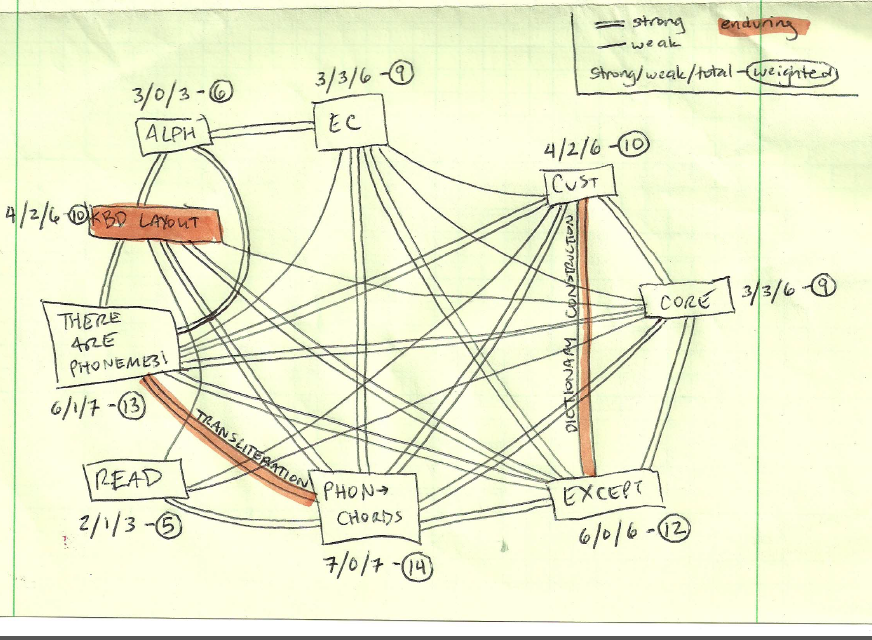
The laser cut keys are here!

I spent Saturday peeling the sticky paper off of them and watching Downton Abbey. Last night I watched more Downton Abbey while sticking the keys onto one of my 10 SideWinders. Doesn't it look great? It works really well, too. In honor of the occasion, I entered a bunch of html formatting strokes into my dictionary, and I've written 100% of this blog post using it. I've got enough keys for 20 sets, though five of those are already spoken for, and 10 will be set aside for my PyGotham Plover workshop on June 8th. I'm really excited about that.
So the next week or so will involve lots of opening SideWinder boxes, peeling foam backing, and sticking on keys. I'm wondering whether I should commission some sticker sheets for the keys from InAFlashLaser, but I'm not sure. On the one hand, I feel like sticking on colored labels for each letter on the keyboard would give beginners a leg up in trying to figure out steno in three hours. On the other hand, I worry that it would make combining those letters into chords more confusing. I know that my steno teachers at school were adamant about never labeling steno machine keys, but they were wrong about so many things, it's hard to tell how much credibility to give them in this case. It might be overkill, because I've hired a freelance graphic designer to remake my functional but butt-ugly steno alphabet chart into a more elegant and aesthetically consistent form, and I'm hoping to have at least one poster to put up in the front of the room while I give the workshop. But maybe stickers plus poster are the killer combination? It's really hard to say.
After the workshop, I'm going to try to put some sort of Plover store up. We'll sell the key sets, SideWinders with keytoppers already stuck on, the steno alphabet poster, the alphabet stickers if I wind up deciding to make them, and possibly some other random merch-type swag such as coffee cups or hats or T-shirts or something. Not sure about those. Is there demand for such a thing? Any ideas you guys might have in that department is very welcome. All proceeds, of course, will go to funding store inventory and paying programmers for Plover development. This is really slick. The keys offer a huge improvement in haptic feedback, and increase my comfort, accuracy, and speed on the SideWinder by a huge extent. I think you guys are going to love 'em.
Oh, in case you're interested, here are my new entries for easy html formatting in steno:
"A/HREF": "<a href=\"{^}",
"HAOEPT": "http://{^}",
"PWRABG": "<{^}",
"PWRA*BG": "{^}>",
"EUPBG/SR-S": "<img src=\"{^}",
"PWR": "<br>",
"KHR-BG": "{#Control_L(c)}",
"KHR*F": "{#Control_L(v)}",
